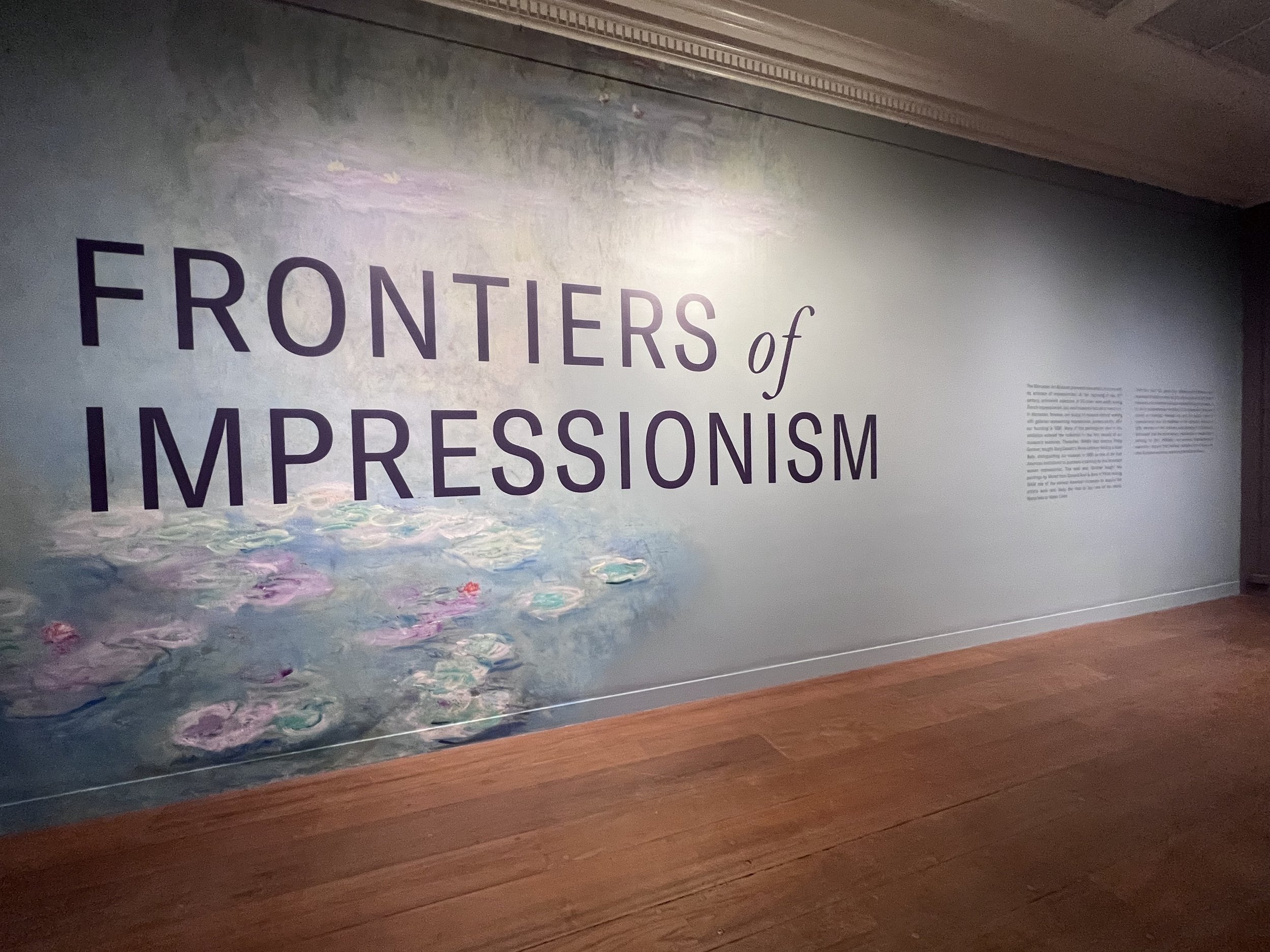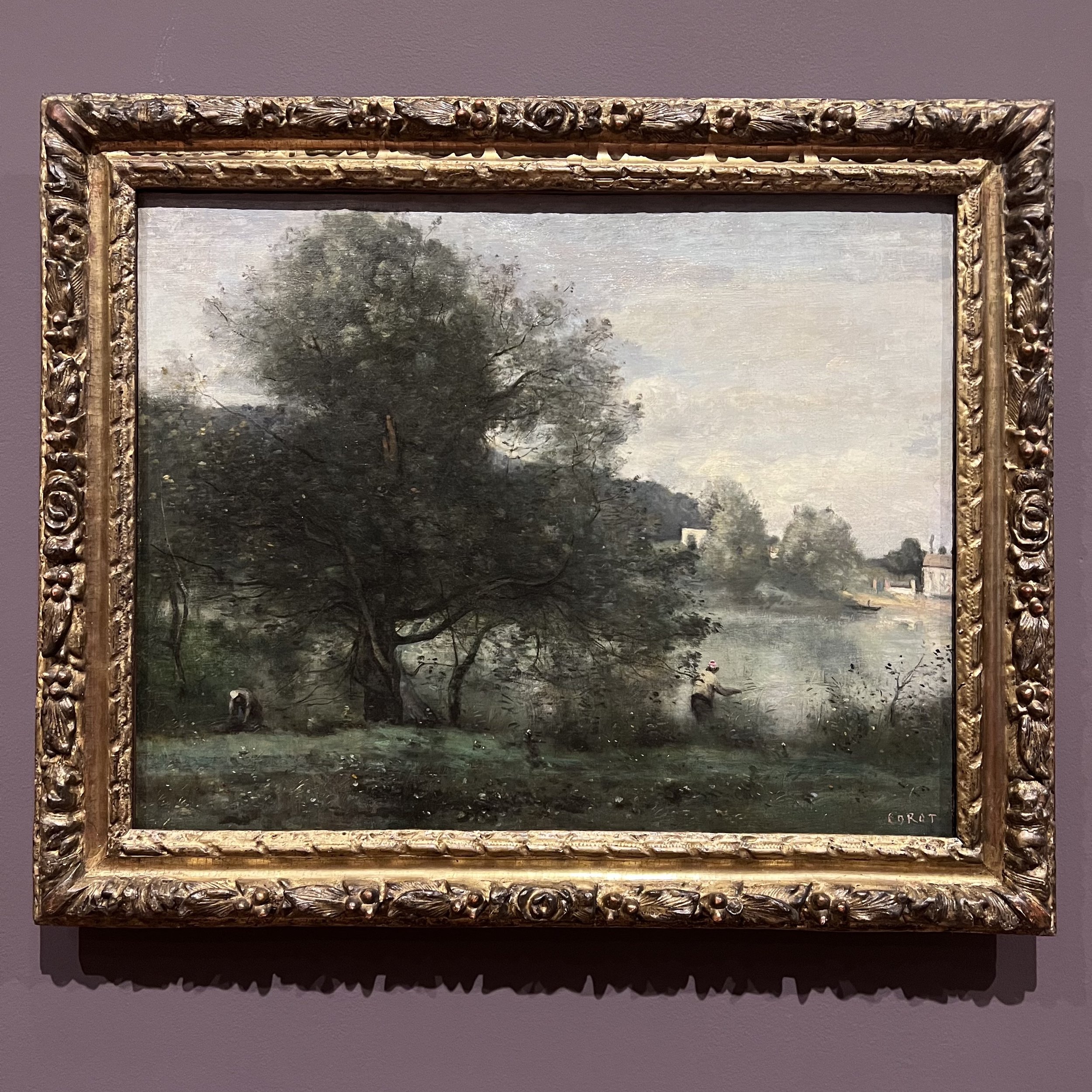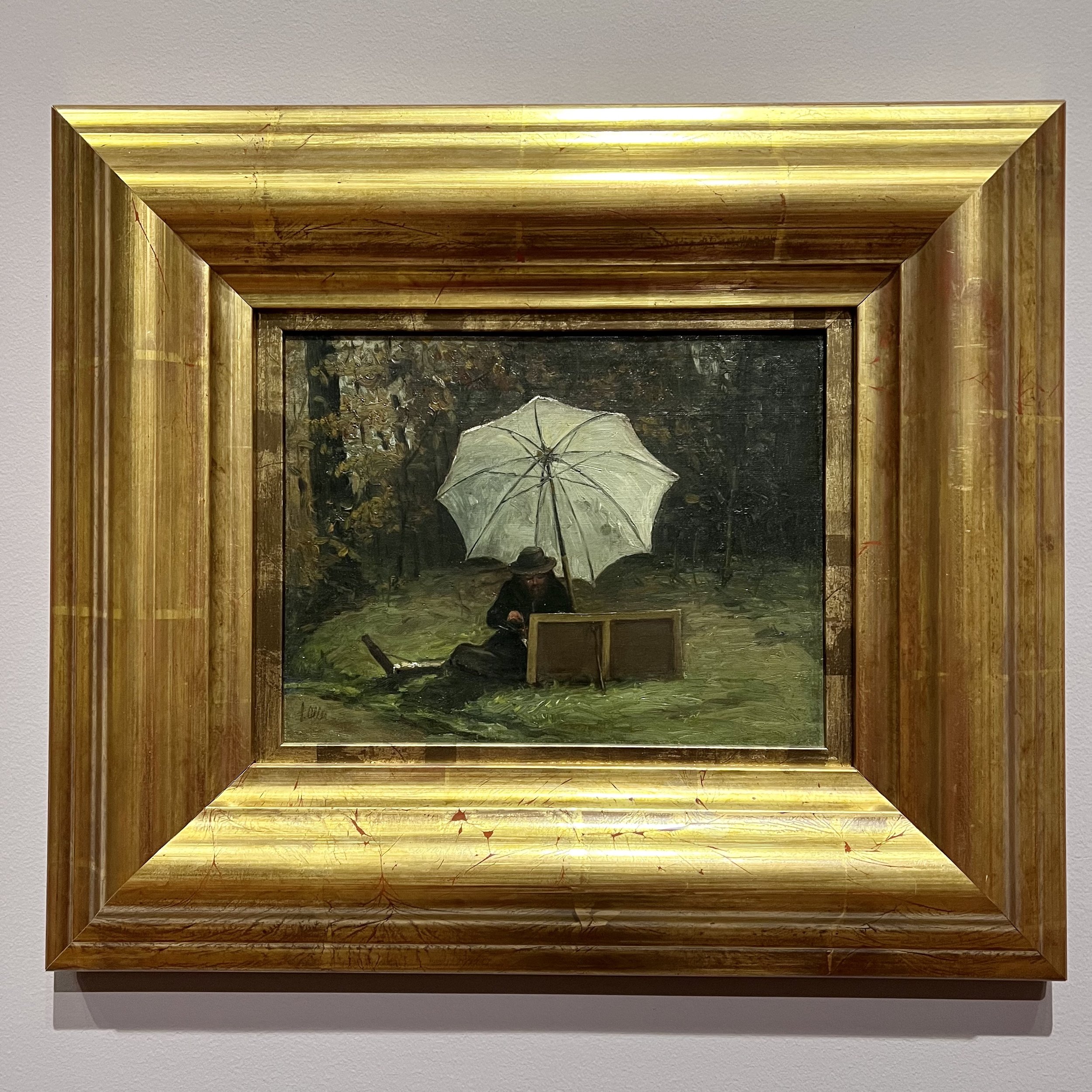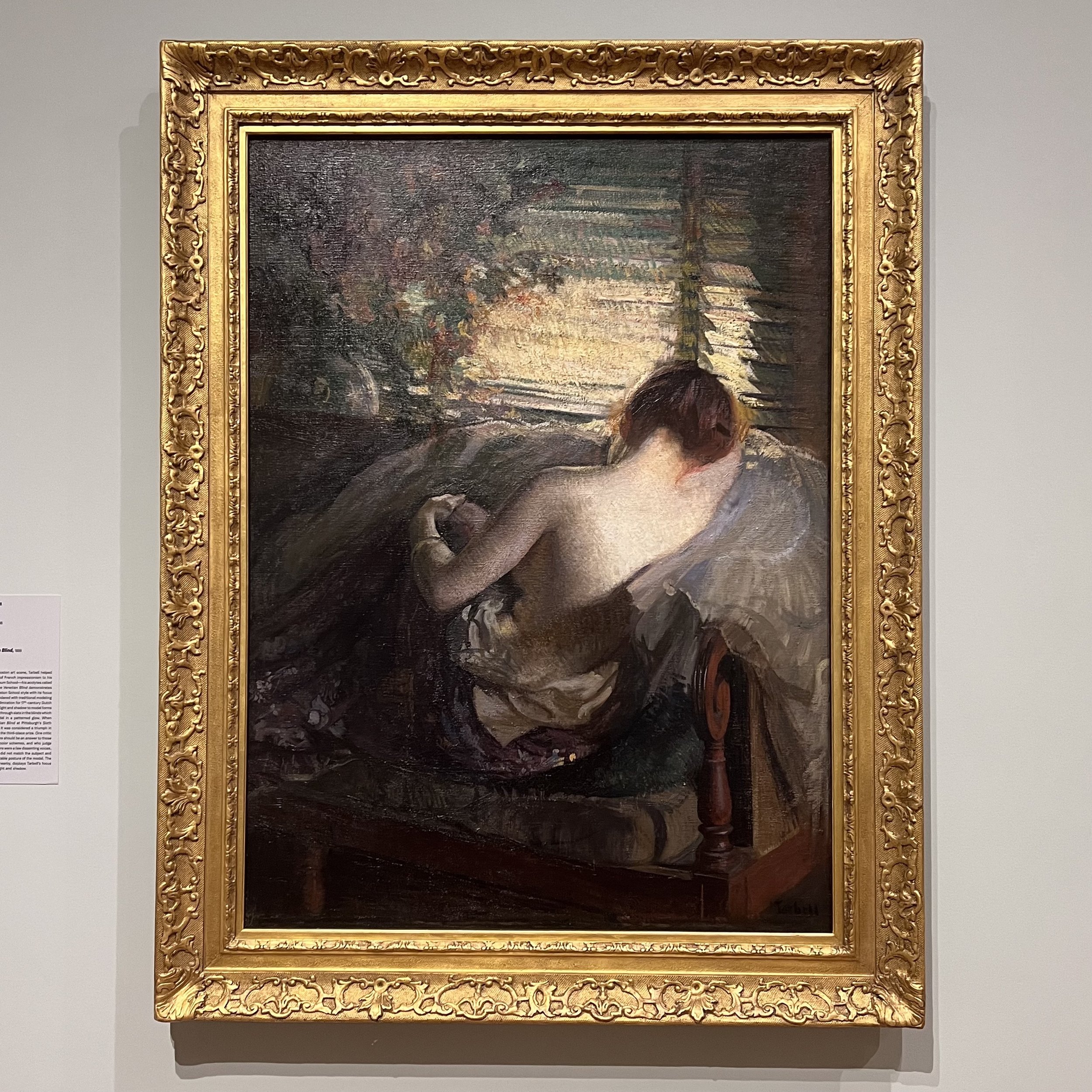Impressionism remains one of the most revered movements in Western art history. The soft focus paintings of Monet continue to hold sway with contemporary audiences sheerly through their unbridled beauty. The divergent influences and aftereffects of the Impressionist movement are less well-known by audiences but are no less worthy of exploration. In a current exhibition at the Worcester Art Museum, some of the complex realities of this art historical moment are explored, resulting in new insights that go beyond a popular aesthetic.
The entrance to the exhibition is a wall-spanning tribute to the Worcester Art Museum’s prized Monet Waterlilies.
Fronters of Impressionism, curated by Claire C. Whitner and Erin Corrales-Diaz, aims to unpack the nuances of artmaking in the late nineteenth and early twentieth centuries. On view through June 25, the show probes the world as it was when Impressionism arrived and shares works produced by concurrently occurring artistic movements. The narrative the exhibition unfolds will give many museum visitors their first broad readings of a period that is often characterized in the popular imagination as being dominated by the likes of Renoir or Cassatt.
The exhibition of course has fine examples of European paintings like Claude Monet’s 1908 Waterlilies, which was purchased by WAM within just a couple years of its creation. This is the kind of image that springs to mind when the term Impressionism is raised. But alongside Monet, the exhibition also contextualizes movements like the Barbizon School or later Pointellist creations and does an excellent job of illustrating how artists outside of Europe digested and influenced the avant-garde ideas of the Impressionist vanguard.
Corot’s A Fisherman on the Banks of the Pond, created between 1865-70, is a prototypical Barbzon artwork, and the type that would inspire generations of American landscape painters.
Works by Puerto Rican artist Francisco Oller y Cestero (1833-1917) are featured in the exhibition, highlighting an artist who was intimately involved in the zeitgeist of the turn of the century and who had friendships with peers like Pissarro. In a small painting from 1864, Oller y Cestero captures his friend Paul Cézanne painting out of doors, documenting one of the more important strategies of boundary-breaking artists in the nineteenth century. Where the powerful French Academy of Fine Arts demanded that polished artworks be produced in the studio, young artists rejected this and painted “finished” works en plein air, giving life to a tradition that continues today.
Both a product and document of the Impressionism moment, Francisco Oller y Cestero’s painting of his friend Cézanne depicts the technique behind the avant-garde plein air painters.
Artists of the United States also make up a sizable component of the show. A fine example by landscapist Edward Mitchell Bannister is shown alongside portraits by John Singer Sargent and Cecilia Beaux. One of the best paintings in the show is by fellow American Edmund Charles Tarbell (1862-1938). Titled The Venetian Blind and produced in 1898, the painting was another early acquisition by WAM and has been owned by the museum since 1904. A award-winning work in its day, Tarbell’s figure is bathed in diffused golden light and interior elements like the titular shades bear his distinctive and painterly hand. It is at once a romantic and modern image, hinting at European precedents while tackling a contemporary subject in a novel way.
One of the exhibitions most interesting pieces, Edmund Tarbell’s The Venetian Blind, produced in 1898, presages the type of figurative artwork that has only recently returned to vogue in the twenty-first century.
Through the show, viewers will be able to follow the influences of Impressionism through to their various conclusions. The reality is that the ways in which these intrepid artists shaped the works made by ensuing generations are hard to define. But Frontiers of Impressionism provides a great sampler, and in doing so promises to encourage visitors to find new connections between individual artists, discrete schools, and varying periods.
Towards the end of the exhibition, some of the more radical offspring of the changing art world are shown. A vivid and lush Paul Signac painting from 1896 shows off a technicolor Pointellist technique. Capturing the Golfe Juan in the South of France, the image of a pink horizon over the seaside is scintillating and celebratory. Nearby, Georges Braque’s Olive Trees from 1907 tackles another landscape subject with similar zeal. While Signac’s coastal scene is a coalescence of painted dots, Braque’s tree is a disintegration of limbs executed in utterly unnatural tones. Looking at it, the thrilling modernisms of the twentieth century that owe so much to their nineteenth century predecessors can be seen and felt in the distance.
Georges Bracque’s 1907 Olive Trees heralds the excitement of forthcoming modernisms that would define art in the twentieth century.
Frontiers of Impressionism is on view now through June 25, 2023 at the Worcester Art Museum. After the exhibition concludes in Worcester it will travel to the Tampa Museum of Art, the Tokyo Museum of Art, and other venues. Learn more about the exhibition and plan your visit while it is on view in New England at www.worcesterart.org.





